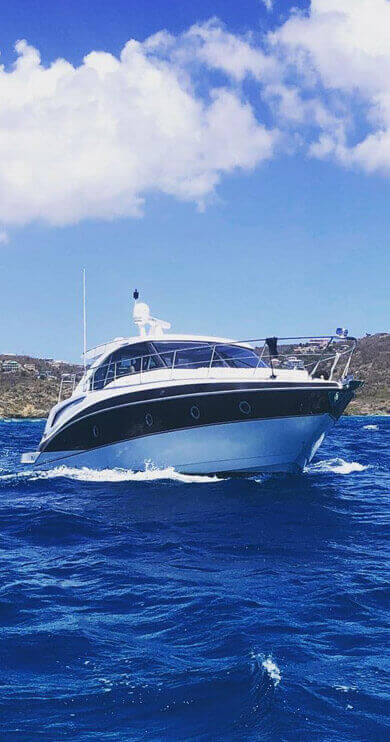Showing all 24 results
Suite Life
$799,000.00Painkiller
 Independent Boat Yard and Marina, St.Thomas, VI, USVI
Independent Boat Yard and Marina, St.Thomas, VI, USVI Needs Repairs
Needs Repairs fiberglass
fiberglass 2006
2006 34 (ft)
34 (ft)Days Like This
$290,000.00Lauren L
$199,000.00Reel Salty
$195,000.00Tempest
$90,000.00Go Fish
$45,000.00Skimmer
$35,000.00Pirate Girl
$109,000.00Kanaloa
$53,500.00Calico Jack
$140,000.00Highland Lass
$699,000.00Sportis
$129,000.00Sea Spray II
$32,000.00ZunZun
$205,000.00Corsair
$290,000.00Boat hulls are an essential component of any watercraft, serving as the main structure that supports and moves the vessel through the water. They come in various designs and materials, each tailored to specific boating activities and water conditions. Here are some common types of boat hulls:
1. Displacement Hulls: These hulls are designed to displace water as the boat moves forward. They are often found on sailboats and trawlers, providing excellent stability and fuel efficiency. Displacement hulls are ideal for long-distance cruising and are characterized by their rounded shape and a deeper keel.
2. Planing Hulls: Planing hulls are designed to rise up and glide on the water’s surface at higher speeds. They are commonly seen on powerboats and are characterized by a flatter shape and a wide beam. Planing hulls allow the boat to reach higher speeds and provide a smoother ride in rougher water conditions.
3. Catamaran Hulls: Catamaran hulls consist of two parallel hulls connected by a deck structure. They offer excellent stability, reduced drag, and increased speed. Catamarans are popular for sailing, cruising, and even racing. They have a wide beam and provide ample deck space for various activities.
4. V-Shaped Hulls: V-shaped hulls are designed with a sharply angled bottom, resembling the letter “V.” This type of hull is commonly found on powerboats and provides excellent maneuverability, stability, and a smooth ride in choppy waters. V-shaped hulls are versatile and suitable for a range of boating activities.
5. Flat Bottom Hulls: Flat bottom hulls have a flat bottom surface, making them ideal for boating in shallow waters, such as rivers and lakes. They offer excellent stability and are commonly used in fishing boats, jon boats, and small recreational vessels.
6. Deep-V Hulls: Deep-V hulls are similar to V-shaped hulls but have a deeper and more pronounced V-angle. These hulls are designed for high-performance boats, providing exceptional speed and maneuverability in rough water conditions. Deep-V hulls are commonly seen in offshore racing boats and sport fishing vessels.
7. A trimaran hull is a type of boat hull that consists of three parallel hulls connected by a deck structure. It is a unique and distinctive design that offers several advantages for boating enthusiasts.
The central hull of a trimaran is typically larger and longer than the two outer hulls, providing increased stability and buoyancy. The outer hulls, known as outriggers or floats, extend on either side of the central hull and are usually smaller in size. This configuration allows the trimaran to distribute weight evenly, reducing the chances of capsizing and providing excellent stability, even in rough water conditions.
One of the key benefits of a trimaran hull is its increased speed. The combination of the central hull’s streamlined shape and the reduced drag from the outriggers allows the trimaran to achieve higher speeds with less effort. This makes trimarans an excellent choice for racing or performance-oriented sailing.
Trimarans are also known for their spaciousness and ample deck space. The wider beam provided by the outriggers allows for a more open and expansive deck area, making it ideal for socializing, sunbathing, or accommodating larger groups of people. The additional deck space can also be utilized for various activities such as fishing, diving, or water sports.
In terms of versatility, trimaran hulls offer a wide range of boating possibilities. They are commonly used for cruising, day sailing, and even long-distance voyages. Trimarans are also popular in the racing community, with dedicated models designed specifically for competitive sailing events.
Trimarans can be constructed from various materials, including fiberglass, aluminum, and carbon fiber. This allows for flexibility in terms of strength, weight, and durability. The choice of material depends on factors such as the intended use of the boat, budget, and personal preferences.
In summary, a trimaran hull is a unique and efficient design that combines stability, speed, and spaciousness. Whether you’re looking for an exhilarating sailing experience or a comfortable cruising vessel, a trimaran offers a versatile and enjoyable boating option.
It’s important to note that boat hulls can be made from various materials, including fiberglass, aluminum, wood, and even inflatable materials. Each material offers different benefits in terms of strength, weight, durability, and maintenance requirements.
When choosing a boat, it’s essential to consider the type of hull that best suits your boating needs, water conditions, and intended activities.




























